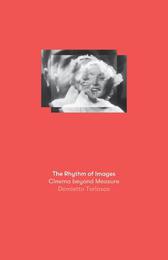
|
The Rhythm of Images: Cinema beyond Measure
Hardback
Main Details
| Title |
The Rhythm of Images: Cinema beyond Measure
|
| Authors and Contributors |
By (author) Domietta Torlasco
|
| Series | Cultural Critique Books |
|---|
| Physical Properties |
| Format:Hardback | | Pages:200 | | Dimensions(mm): Height 216,Width 140 |
|
| Category/Genre | Film theory and criticism
Philosophy |
|---|
| ISBN/Barcode |
9781517910204
|
| Classifications | Dewey:791.4301 |
|---|
| Audience | | General | | Professional & Vocational | |
|---|
| Illustrations |
14 b&w illustrations
|
|
Publishing Details |
| Publisher |
University of Minnesota Press
|
| Imprint |
University of Minnesota Press
|
| Publication Date |
8 June 2021 |
| Publication Country |
United States
|
Description
A rigorous and imaginative inquiry into rhythm's vital importance for film and the moving image Focusing attention on a concept much neglected in the study of film, The Rhythm of Images opens new possibilities for thinking about expanded perception and idiosyncratic modes of being. Author Domietta Torlasco engages with both philosophy and cinema to elaborate a notion of rhythm in its pre-Socratic sense as a "manner of flowing"-a fugitive mode that privileges contingency and calls up the forgotten fluidity of forms. In asking what it would mean to take this rhythm as an ontological force in its own right, she creatively draws on thinkers such as Giorgio Agamben, Roland Barthes, Gilles Deleuze, and Luce Irigaray. Rhythm emerges here as a form that eludes measure, a key to redefining the relation between the aesthetic and the political, and thus a pivotal means of resistance to power. Working with constellations of films and videos by international artists-from Michelangelo Antonioni, Jean-Luc Godard, and David Lynch to Harun Farocki and Victor Burgin, among others-Torlasco brings to bear on them her distinctive concept of rhythm with respect to four interrelated domains: life, labor, memory, and medium. With innovative readings of artworks and critical texts alike, The Rhythm of Images fashions a vibrant, provocative theory of rhythm as the excess or potential of perception. Ultimately, the book reconceives the relation between rhythm and the world-making power of images. The result is a vision of cinema as a hybrid medium endowed with the capacity not only to reinvent corporeal boundaries but also to find new ways of living together.
Author Biography
Domietta Torlasco is a critical theorist, filmmaker, and associate professor in the Department of French and Italian and in the Comparative Literary Studies Program at Northwestern University. She is author of The Heretical Archive: Digital Memory at the End of Film (Minnesota, 2013) and The Time of the Crime: Phenomenology, Psychoanalysis, Italian Film. Her recent video essays screened at the Walker Art Center in Minneapolis and the Museum of Contemporary Art in Los Angeles.
Reviews"Domietta Torlasco is a unique scholar-artist whose work resides at the intersection of critique and practice, reflection and poeisis. Her erudition and critical virtuosity are on full display in The Rhythm of Images, a work that looks at the way image cultures produce rhythms that resonate across philosophy, speculative thought, and cinema. Among the remarkable achievements of The Rhythm of Images is its stereographic score, a multivocity that emerges from the force of Torlasco's ensemble."-Akira Mizuta Lippit, author of Cinema without Reflection: Jacques Derrida's Echopoiesis and Narcissism Adrift "Domietta Torlasco's The Rhythm of Images is a major breakthrough in aesthetic ontology. At the heart of this extraordinary intervention-as beautifully written as it is rigorously conceived-is an unexpected conception of rhythm as rhuthmos. Taken as rhuthmos, rhythm is understood against the all-too-familiar, and altogether problematic, assumption that rhythm is the engine of order, synchronization, and relations of identity-and against the idea that rhythm is primarily a question of sound. For Torlasco, rhythm is a force of difference, of what holds us together in and with difference. And what emerges first as a difficult problem of form moves fearlessly outward to surprisingly new, and much needed, ways of thinking about the relation between being and technicity, subject/object relations, time and capital, freedom and labor, difference and sameness."-Brian Price, University of Toronto
|